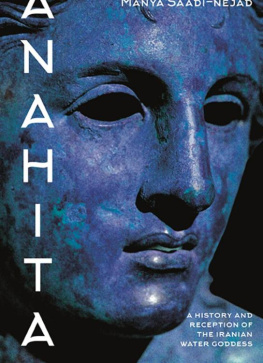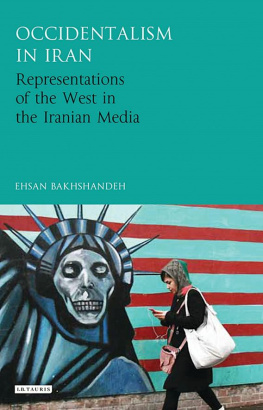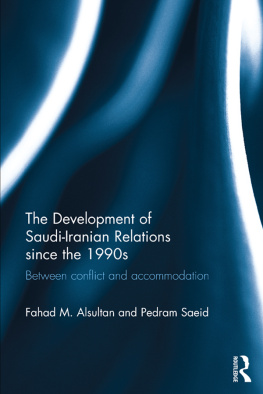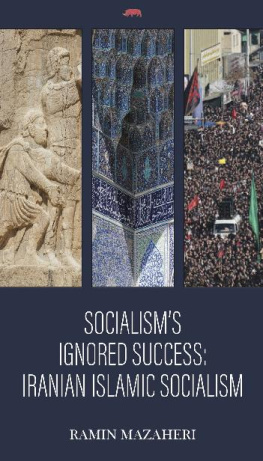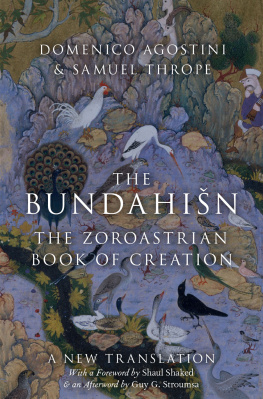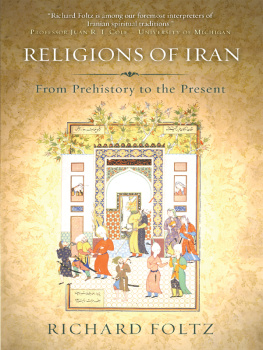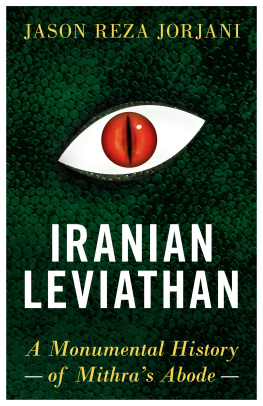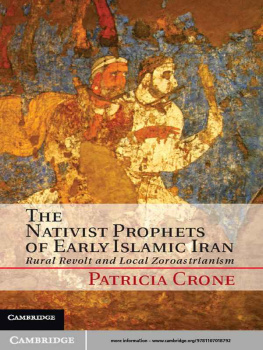
Anahita
ii
Anahita
A History and Reception of the Iranian
Water Goddess
Manya Saadi-nejad
9781838601119_txt_print.indd 3
21-08-2020 06:32:09
I.B. TAURIS
Bloomsbury Publishing Plc
50 Bedford Square, London, WC1B 3DP, UK
1385 Broadway, New York, NY 10018, USA
BLOOMSBURY, I.B. TAURIS and the I.B. Tauris logo
are trademarks of Bloomsbury Publishing Plc
First published in Great Britain 2021
Copyright Manya Saadi-nejad, 2021
Manya Saadi-nejad has asserted her right under the Copyright, Designs and Patents Act, 1988, to be identified as Author of this work.
For legal purposes the Acknowledgments on p.vii constitute an extension of this copyright page.
Cover design: Adriana Brioso
Cover image World History Archive / Alamy Stock Photo
All rights reserved. No part of this publication may be reproduced or transmitted in any form or by any means, electronic or mechanical, including photocopying, recording, or any information storage or retrieval system, without prior permission in writing from the publishers.
Bloomsbury Publishing Plc does not have any control over, or responsibility for, any third-party websites referred to or in this book. All internet addresses given in this book were correct at the time of going to press. The author and publisher regret any inconvenience caused if addresses have changed or sites have ceased to exist, but can accept no responsibility for any such changes.
A catalogue record for this book is available from the British Library.
A catalog record for this book is available from the Library of Congress.
ISBN:
HB: 978-1-8386-0159-1
PB: 978-1-8386-0111-9
ePDF: 978-1-8386-0157-7
eBook: 978-1-8386-0156-0
Typeset by Integra Software Services Pvt. Ltd.
To find out more about our authors and books visit www.bloomsbury.com and sign up for our newsletters.
Contents
First and foremost, I would like to extend my warmest, heartfelt thanks to Professor Maria Macuch and Professor Almut Hintze, who were my supervisors during my Ph.D. at Freie Universitt, Berlin, for their support and helpful comments. I am grateful to Professors Mark Hale, Jean Kellens, and James R.
Russell for discussions that were as helpful as they were encouraging. I am eternally grateful to my parents Dr. Reza Saadi nejad and Azam Sadati, for their unconditional love and support. I would like to thank my son, Persia Shahdi, for his patience and support throughout the years I spent in writing this book.
And Finally, I would like to take this opportunity to thank Dr. Richard Foltz for his help and support, encouragement, and our valued conversation during many years.
The transcription of Avestan is based on the system of Karl Hoffman (Hoffmann 1975). For Pahlavi I have used the system of D. N. Mackenzie (Mackenzie 1986).
I have based my transcriptions from New Persian on those of the EncyclopdiaIranica (Yarshater 1982).
AM
Andarz durbd Mahraspandn
AS
Abdh ud Sahgh Sagistn
Av Avestan
AW
Aydgr Wuzurgmihr
AWN
Ard Wrz-Nmag
Bd
Bundahin
AP
dag Andarz Prytkn
Dk
Dnkard
GBd
Greater Bundahin
HN
Hxt Nask
HR
Husraw Kawdn ud Rdag-
KAP
Krnmag Ardaxr Ppagn
MP
Middle Persian
MX
Mng xrad
N
Nrangestn
NM
Nmagh Manuihr
NP
New Persian
Phl Pahlavi
PIE Proto-Indo-European
RV
g Veda
ahrestnh rnahr
Skt Sanskrit
x
Abbreviations
N
h-nmeh
Vd
Vdvdd
WZ
Wizdagh Zdsprm
Y
Yasna
Yt
Yat
ZWY
Zand Wahman Yat
This is a study of how the most important goddess of pre-Islamic Iran, Anahita, was transformed over time. Possibly having roots in the prehistoric river goddess(es) of the ancient proto-Indo-European peoples of the fifth millennium BCE or earlier, she emerges by the late Achaemenid period as one of the three principal deities of the Iranian pantheon, alongside Ahura Mazda and Mira.
An important Avestan hymn, the bn Yat, is composed in the honor of Anahita, establishing her role within the Zoroastrian religion. During the course of this process, she acquires additional functions, presumably from preexisting goddesses in the regions where Iranians came to live. Variations on the Iranian Anahita are found in the religious cultures of neighboring lands, such as Armenia, Bactria, and Sogdiana. With the coming of Islam, her cult disappeared, yet numerous aspects of it survived in female figures from Persian literature and through folk tales and rituals, usually Islamicized, which are often connected with water. This study aims to schematize these variations over time and space, in order to trace Anahitas development as a major figure in Iranian religion and the constantly evolving mix of her roles and attributes within culturally diverse communities throughout Greater Iran.
According to both the Avesta and the royal inscriptions of three successive Iranian empires, Anahita (along with Mira) was the most powerful deity created by the supreme being, Ahura Mazda. ore such sites are being identified all the time, and numerous place names throughout Iran (Pol-e doxtar, Qale-ye doxtar, etc.) may reflect her memory. Many holy sites across the Middle East are thought
Anhit
to have been originally temples devoted to Anahita
In the context of ancient Iranian religion, Anahita is noteworthy in a number of respects. First, she is the most prominent female deity among the Iranian goddesses, being worthy of worship, within a largely male pantheon of Iranian deities. Second, her visual aspect is more fully developed than of any other Iranian deity: she is a shape-shifter, alternately a goddess and a river, and has been described fully in both forms. Physical descriptions of her in the Avesta are very extensive and detailed. Some of the other deities mentioned in the Yasts do occasionally take on various shapes (animals and human beings). However, since in the Iranian belief system deities are not usually perceived in human forms, they are not generally anthropomorphized to the extent one sees in Greek and Mesopotamian mythology.
In her original form as a water goddess, Anahita is more involved in fertility, support, and healing. Over time, however, and perhaps partly through influence from non-Indo-European goddesses, she acquired additional functions and characteristics which tied her to the warrior and priestly functions as well. In contrast to the norm according to which a deity was connected to a particular social group, Anahita came to be associated with all of the three major social categories of ancient Iranian society: priests/rulers, warriors, and producers.
By the historical periodspecifically her appearance in the Avestan hymn devoted to her, the bn YatAnahita as the female yazata of the water
comes to possess three very different aspects: she is simultaneously (1) a spiritual ruler, (2) a mighty deity who supports warriors, and (3) a fertility goddes
Thus, through the acquisition of new characteristics, which were likely taken over from preexisting local, non-Iranian goddesses, Anahita assumed functions associated with the full range of her devotees needs and concerns at all social levels, giving her a uniquely important role in the emerging Iranian society.
Next page
